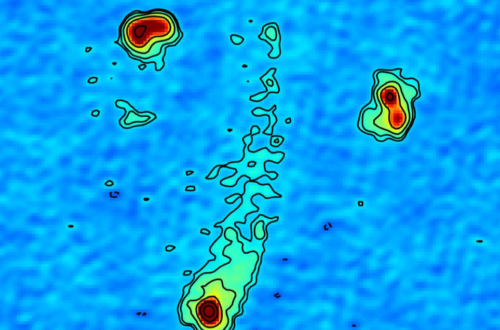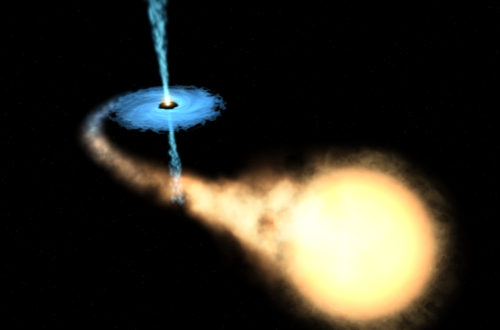X-ray binaries with a Galactic black hole (BHXRBs) have recently been detected in GeV and TeV γ-rays. The radiative mechanism responsible for this emission is not yet fully understood and both leptonic and hadronic processes seem viable. In the former scenario, electrons are accelerated to high energies and dominate the non-thermal spectrum with synchrotron and inverse Compton scattering. In the latter case, protons are also accelerated as well and contribute (or even dominate) in the most energetic regime of the spectrum via neutral pion decay. In the past few years, I have been working on understanding these physical processes, focusing mostly on the hadronic ones. But allow me first to make a better connection between the black hole and the radiative processes.
In the following image, you can see an artist’s impression of a BHXRB that launches two relativistic jets. The composition of the jets is not fully constrained but we believe that they are formed of a plasma containing electrons/positrons and protons alongside magnetic fields and radiation. These particles within the jets are accelerated to high energies, but at the same time, they also lose energy due to cooling. The electrons, for instance, emit synchrotron radiation due to the magnetic fields and scatter photons to non-thermal energies. Protons on the other hand, when accelerating to high energies, interact with the ambient material and/or the radiation leading to particle cascades (the newly formed particles lead to numerous more particles and so on and so forth). The stable particles formed in the end, are electrons/positrons, neutrinos, and γ-ray photons.
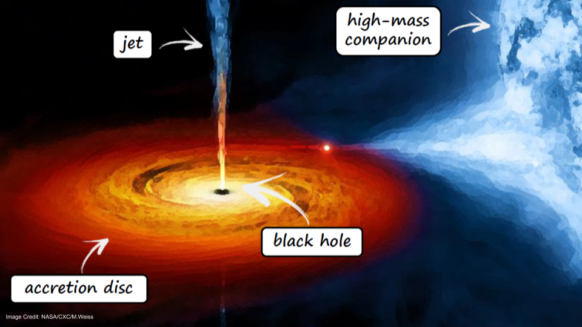
During the first years of my Ph.D. I developed a model that takes into account all of the above processes, so as to be able to compare and combine them to the leptonic processes. I then applied this model to the first simultaneous dataset covering the whole electromagnetic spectrum of Cygnus X-1, one of the few BHXRBs detected in GeV γ-rays as well. My ultimate goal was to understand the origin of the GeV emission, as well as to see whether Cygnus X-1 could be detected by CTA.
In the following figure, I show the total electromagnetic spectrum of Cygnus X-1 during the simultaneous observations of VLA, NOEMA, XMM, NuSTAR and INTEGRAL. I’d like to draw your attention to the following important features of the spectrum. The jets of Cygnus X-1:
- emit radiation that covers 15(!!) orders of magnitude in photon energy (thick solid green line),
- emit non-thermal synchrotron radiation that peaks in the MeV band explaining the polarization measured by INTEGRAL (see Laurent et al. 2011, Science, 332, 438; Jourdain et al 2012, ApJ, 761, 27; Rodriguez et al. 2015, ApJ, 807, 17), and
- produce the GeV emission detected by Fermi/LAT via inverse Compton scattering.
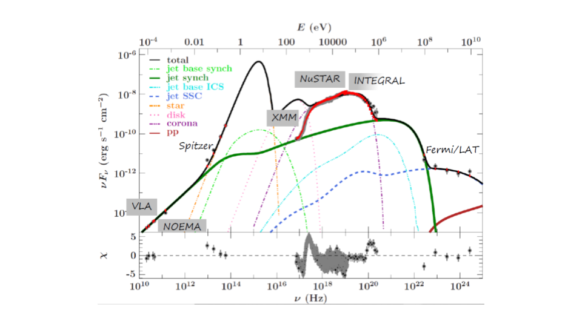
But what about the protons? What’s their role in the spectrum?
Well, the signature of hadronic processes is important only in the most energetic part of the spectrum. In the following plot, I show the γ-ray spectrum of Cygnus X-1, between GeV and TeV γ-rays. The hadronic emission dominates in the TeV regime. Interestingly enough, the process responsible for this emission is the inelastic interaction between the non-thermal protons and the radiation field produced within the jets, an interaction that is commonly neglected! And if you focus on the 1-50 TeV regime, you will see that this emission is strong enough (solid red line) to be detected by CTA!
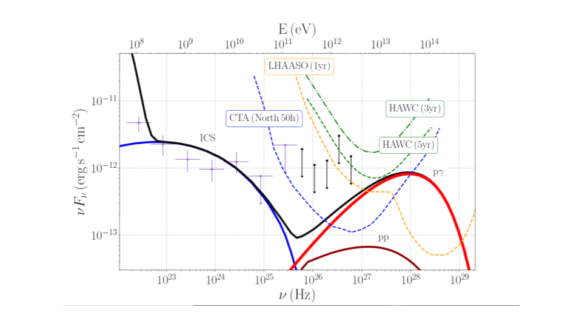
So, the main lesson I learned from this work is that both leptonic and hadronic processes can co-exist in the same environment and play a crucial role in explaining totally different parts of the spectrum! Are you interested in more details? Don’t hesitate to poke me and/or check here!



